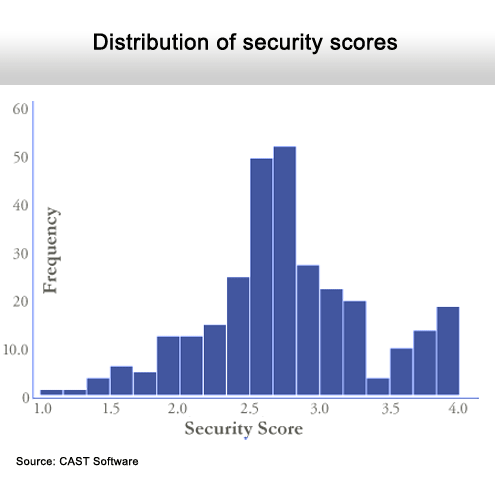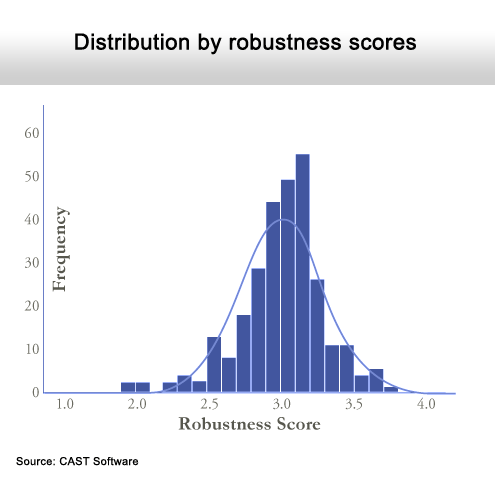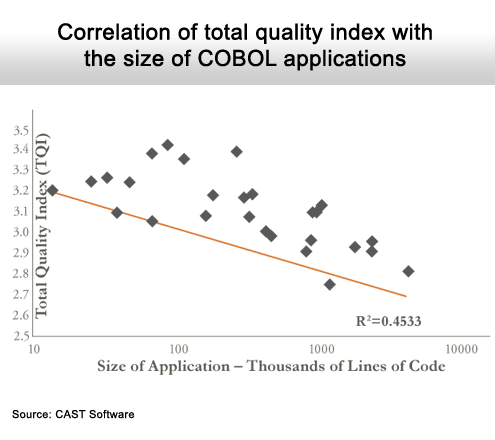The amount of "technical debt," otherwise known as issues that have to be addressed after an application has been deployed in production, on average is over $1 million for each business application.
That’s the finding of new research released today by CAST Software, a provider of software analysis and measurement tools.
According to Bill Curtis, chief scientist for the CAST Research Labs and director of the Consortium for IT Software Quality that was created by the Software Engineering Institute and the Object Management Group, applications built using C/C++ code tend to have the most technical debt, while COBOL applications had the least.
Curtis said that one of the more interesting things that the survey found is that there is no correlation between the size and the quality of the application. Instead, the study found that the quality of the application is actually tied to how modular versus monolithic the application is. More modular applications tend to have higher quality, said Curtis, because they are more manageable.
The study also finds that COBOL applications ranked highest when it came to security, which Curtis said reflects the mission-critical environments these applications are usually deployed in. At the same time, COBOL applications ranked highest in complexity, which makes them among the most difficult applications to manage.
The study also found that Microsoft .Net applications are among the least robust applications. And in terms of performance, Curtis said the study also shows that Java Enterprise Edition applications have the widest variance, which Curtis says shows a lot of inconsistency in terms of implementation.
Finally, the study finds that when it comes to building applications that are easy to change, the government sector ranks worst. And government agencies are also much more likely to outsource the building of those applications, which leads Curtis to wonder why government applications built by professional services firms are so rigid.
Click through for survey results from CAST Software.
Overall application security tends toward the middle.
But when you take a closer look, COBOL leads by far.
Performance varies widely.
Surprisingly, Java EE tends to score lower.
These scores are shifting higher.
While Oracle 4GL apps are a little less robust.
Overall score is pretty high.
Government and Telecom have some of the lower scores.
Governments make more use of outsourcing.
Despite myths to the contrary, there is no correlation.
COBOL is most complex, by far.
C/C++ applications have the most unaddressed issues.















